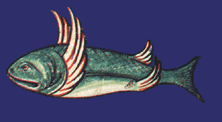Can programming and debugging be made interesting in fiction?
The culture of computing often is hard to represent in other media. Films about hackers always have trouble conveying the excitement of using a terminal (typing and recieving text.) Only with VR could visual representations of information be developed to aide the richness of a movie. But now there are serious novelists weaving computing culture into novels. Powers, Coupland, and Ullman.
These writers are both drawing tropes from computing that they can develop in real (fictional worlds) and commenting on the culture of computing which has had such a hold on our imagination.
Ullman’s The Bug is an example of literature that draws themes from the details of computing (malloc – memory allocation, core dump, Game of Life) rather than mock them.
See Techno-culture ala Ellen Ullman (Update 2003, The Bug) (twURLed World Description) for links.
Continue reading Ellen Ullman, The Bug
